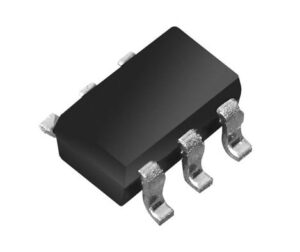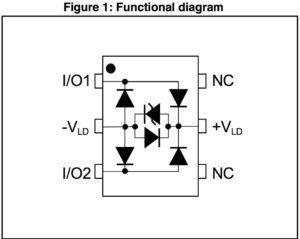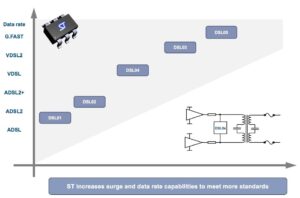The DSL05 family of secondary protectors for DSL and G.FAST lines continues to grow with components now rated at 8 V, 12 V, 24 V, and soon 16 V, thus enabling manufacturers to greatly enhance the efficiency of their design. As Digital Subscriber Lines (DSL) continue to connect the world to the Internet, infrastructure, and consumer modems, must deal with random electrical surges, such as those caused by a lightning strike. The solution to prevent damage consists of using secondary protectors to safeguard line drivers, which ensure a longer lifespan of the circuit, and a better integrity of the signal. However, as G.FAST is becoming increasingly popular, and often using 12 V line drivers, 24 V secondary protectors are no longer the most efficient solutions. Hence, ST came up with new voltages.
DSL05: Adapting to G.FAST’s Requirements

G.FAST is a fairly new DSL protocol for loops shorter than 250 m. Its most well-known feature is its very high-bandwidth, which is between 150 Mbps and 1 Gbps today, and will soon reach 1.5 Gbps. Using regular phone lines, it can greatly reduce capital investments, and deployment costs, which helps it compete with fiber connections. Furthermore, it can connect crowded areas, and still offer high sustained bandwidths, even if lots of customers are using the network simultaneously.
One difference between traditional xDSL and G.FAST lines is that the latter requires a lower voltage to drive the signal. The former, standards lead to the use of 24 V secondary protectors, such as the DSL05–024SC6, but G.FAST is less demanding. Hence, manufacturers use lower voltage line drivers, which in turns means that using the 24 V protector is highly inefficient. It can also put the line drivers at risk. Since they need less voltage than their DSL counterpart, a surge could damage the them before the secondary protector reaches the 24 V breakdown voltage.
The Right Voltage

Thanks to its years of work with telecommunication giants, and its expertise in voltage spike protection in many different applications, ST has been at the forefront of secondary protectors in DSL lines for decades. When most of its competitors only had 19 V VDSL protectors, which caused problems because they would clamp down before there was a real threat to the circuit, and ended up compromising the integrity of the signal, ST was making 24 V protectors, which were much more suited for fast xDSL infrastructure. Today, history repeats itself with G.FAST.
To adapt to the lower voltage line drivers in G.FAST, the DSL05 first launched a new 12 V protector in February 2017, the DSL05–012SC6, and telecommunication partners have already integrated it in their products. Furthermore, a 16 V component, the DSL05–016SC6, is expected to come out this summer. Although many G.FAST line drivers are rated at 12 V, some manufacturers prefer to have a secondary protector with a higher breakdown voltage, to give themselves some margin. However, they can’t use a 24 V protector, because it would be too inefficient and offer too little protection. Hence, the DSL05–016SC6 will soon answer those newest considerations.
Capacitance and Leakage Current

The DSL05 family of protectors is also very popular among manufacturers because it has the lowest capacitance in the industry. For instance, its maximum capacitance is 1.5 pF, regardless of the standoff voltage, whereas the competition goes up to 2.5 pF. Furthermore, whereas other secondary protectors can’t even go below 1 pF, no matter what, the DSL05 family has a typical capacitance of 0.8 pF.
DSL05 components also have some of the lowest leakage current. If we look at the junction temperature, the leakage current is only about 0.1 nA at 25 ºC, whereas competing solutions can reach more than 10 nA at this temperature. Furthermore, as junction temperature rises, the increase in leakage current in the DSL05 line is a lot slower than what we see in devices from other companies.
For instance, leakage current in competing protectors rated at 24 V can be in the thousands of nano amperes when junction temperatures reach 100 ºC, whereas the DSL05–024SC6 stays well below 100 nA. This is such a sensitive subject that not all manufacturers show how their leakage current evolves as junction temperature rises, because they have a very hard time keeping the leakage current under control. However, this has a direct impact on the overall performance of the device, because a low capacitance, and a low leakage current, ensure signal integrity, and limit errors.
